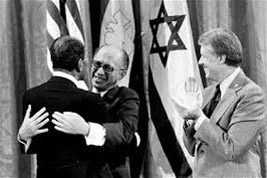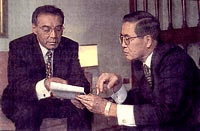March 2, 2017
By Chuck Doran, Mallory Minter and Megan Winkeler

Every negotiation is comprised of two major components: the people taking part in the negotiation and the problem those people need to address. Roger Fisher, William Ury and Bruce Patton introduced the idea of separating the people from the problem in their book Getting to Yes: Negotiating Agreement Without Giving In:
“If negotiators view themselves as adversaries in a personal face-to-face confrontation, it is difficult to separate their relationship from the substantive problem. In that context, anything one negotiator says about the problem seems to be directed personally at the other and is received that way. Each side tends to become defensive and reactive and to ignore the other side’s legitimate interests altogether.”
When we turn our negotiating counterpart into the enemy, we tend to lose focus on resolving the problem. If we can separate our dislike, maybe even hatred, of the other side from our goal to resolve the problem at hand, we become more effective at negotiating deals that are in our best interest.
This is where most people nod and think, “This sounds great – except for my dispute with Carl. Carl is just a bad person, and I cannot negotiate with him.” To encourage you to try separating people from the problem – even with Carl – consider the following examples of world leaders overcoming incredible differences and years of deeply embedded conflict to negotiate sustainable solutions.
In 1979, President Anwar el-Sadat of Egypt and Prime Minister Menachem Begin of Israel signed the Egypt-Israel Peace Treaty, signaling the end of a conflict that damaged the region for decades. Famously facilitated by President Jimmy Carter during the Camp David Peace Accords, the nations agreed to demilitarize the Sinai Peninsula and allow free passage through the Suez Canal and other international waterways. Egypt also agreed to recognize Israel as a state.
According to President Sadat, the facilitation of this treaty “constitutes one of the greatest achievements of our time.” Beyond the years of religious and ethnic-conflict between the two nations, it was well known that President Sadat personally did not like Prime Minister Begin and that strong differences existed between both leaders.
Nevertheless, with the help of President Carter, President Sadat and Prime Minister Begin separated their political relationship from their substantive problems and designed an agreement that allowed their nations to move past enduring military conflict.
In 1998, between President Jamil Mahuad of Ecuador and President Alberto Fujimori of Peru signed the Brasilia Presidential Act, ending the Western Hemisphere’s longest running territorial dispute between the two nations. Prior to negotiation, President Mahuad, a former student of Roger Fisher, invited Fisher to Ecuador in order to get advice on how to approach the negotiation with President Fujimori. In response, Fisher encouraged President Mahuad to build a working relationship with Fujimori.
 In particular, Fisher encouraged President Mahuad to arrange to have a photograph made of the two men. However, he stipulated that this photo should not be of President Mahuad and President Fujimori looking at each other and shaking hands, as is often the case when politicians take photos during an agreement process. Rather, this photo should be of President Mahuad and President Fujimori sitting side-by-side, looking at a writing pad on which they are both working.
In particular, Fisher encouraged President Mahuad to arrange to have a photograph made of the two men. However, he stipulated that this photo should not be of President Mahuad and President Fujimori looking at each other and shaking hands, as is often the case when politicians take photos during an agreement process. Rather, this photo should be of President Mahuad and President Fujimori sitting side-by-side, looking at a writing pad on which they are both working.
This photo, published in the newspaper the day after it was taken, symbolizes the idea of separating the people from the problem. Despite 50 years of warfare between the two countries, Mahuad and Fujimori – both in the photo and during the negotiation – demonstrated the act of separating their political relationship, defined by turmoil, from the substantive border problem in need of a solution.
As difficult as it may be, separating the people from the problem is critical to the success of a negotiation. When a negotiator expresses negative relational feelings through hostile or emotionally-charged actions, the other negotiator may begin to feel attacked and/or uncomfortable in the negotiation process. Trust, communication, and patience between negotiators dwindle, leading both negotiators to seek a swift end instead of a quality solution from the process. In the end, no one comes away fully satisfied with the negotiation process or the result.
Failing to separate the people from the problem also has long-term consequences. For example, if two negotiators have a bad encounter and meet again later – either inside or outside of a negotiation setting – chances are the exchange will be less than optimal. If they meet inside of a negotiation setting, it is likely that they will revert to the same quick, tempered, and inefficient negotiation process as the one before.
To successfully separate the people from the problem, consider the following tips.
When interests and emotions are high, it is easy to turn a negotiation into a boxing ring where you want nothing more than to defeat the other person – and possibly bruise their reputation and self-esteem in the process. Avoid this. In the end, such actions will only lead to a lousy negotiation deal and a tarnished relationship between negotiators. Instead, prioritize the relationship shared between negotiators, separate the people from the problem, and act in a manner that clearly communicates your priorities to your fellow negotiator. This will ensure a smoother negotiation process – from conception to implementation – and will help maintain a strong working relationship between negotiators.
We’d love to hear your thoughts about this article in the comments section below.